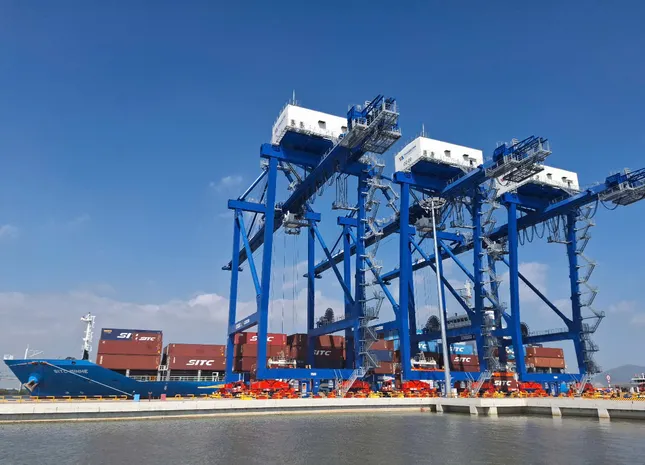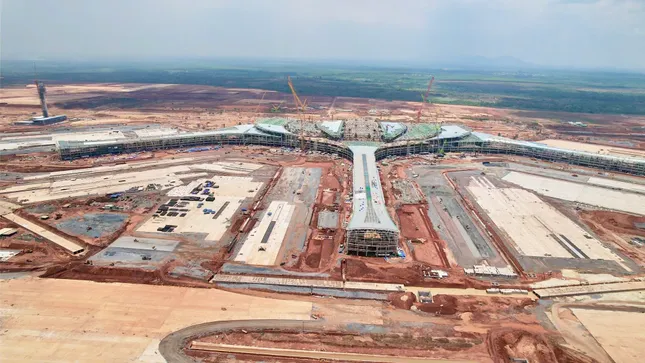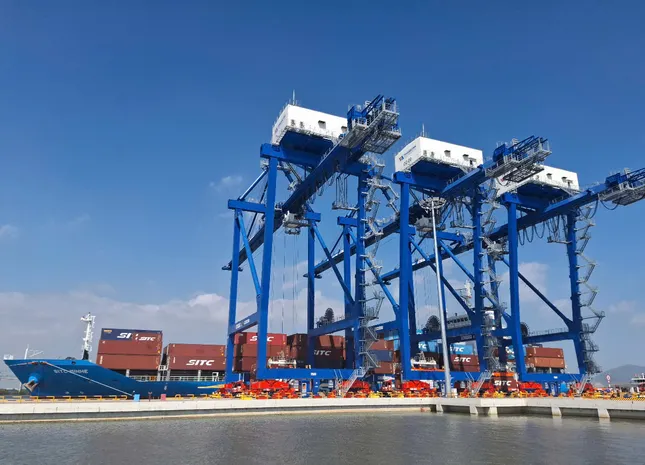Dong Nai People’s Committee has just organized a workshop on “Free Trade Area in Dong Nai – A Growth Driver in the New Era: Taking Off with Long Thanh Airport.”
The workshop attracted many scientists, experts, state management agencies, businesses, and business associations from Vietnam and abroad.

Phuoc An Port.
At the workshop, experts, scientists, businesses, and state management agencies expressed their support for Dong Nai to develop a free trade area, contributing to creating an important driving force for double-digit growth in the new era.
At the same time, some experts further analyzed and clarified the comparative advantages in terms of potential, room for growth, and new development opportunities for Dong Nai province with a free trade area.
According to the proposal, the free trade area will cover an area of over 8,500 hectares and integrate four functional areas: production (3,095 hectares), logistics (2,244 hectares), finance-commerce-services (1,500 hectares), and research, innovation, and digital economy (1,419 hectares). The total investment capital for the entire area is estimated at $16 billion. Of this, public investment accounts for 5%, domestic private investment makes up 40%, and the rest (55%) is foreign direct investment.
Phase 1 is expected to be implemented within five years, covering an area of 3,700 hectares, and costing more than $9.2 billion. Dong Nai province will select 18 industries for the free trade area, including digital logistics, electronics, mechanics, information technology, pharmaceuticals, food processing, and human resources training.

Phuoc An Port and Long Thanh Airport are advantages in building a free trade area in Dong Nai.
Dong Nai People’s Committee affirmed that this is the first free trade area to fully integrate the production ecosystem, airport-seaport logistics, commercial finance, and high-tech industries. With direct connections to Long Thanh Airport and Phuoc An Port, the free trade area will form a multi-modal logistics chain, optimizing costs and enhancing competitiveness.
The Dong Nai Free Trade Area will also connect with Ho Chi Minh City’s Cai Mep Ha Free Trade Area to form a mega free trade area with synchronized and superior mechanisms to compete regionally and internationally.
Dong Nai province expects the project to create a new growth driver for the province’s GRDP, attract international investment, and create high-income jobs. According to the plan, in July, the province will report and submit the proposal to the Prime Minister for approval.
Dong Nai province has proposed policies to exempt corporate income tax for five years for priority sectors within the free trade area, exempt personal income tax for five years for experts and employees working in the free trade area (applicable only to foreigners), and exempt value-added tax
The free trade area will offer a maximum land lease term of 70 years, with the possibility of extension from 10 to 29 years, and a land rent exemption for the first 20 years. From the 21st year onwards, regular land rent will be applied.
Dong Nai province has petitioned the National Assembly and the Government to soon legalize the establishment of free trade areas in localities to provide a legal basis for the province to implement this initiative.
















